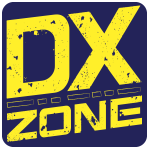Red Pitaya STEMlab 122.88-16 SDR Kit Basic is tailored for HF+50MHz SDR & RF applications that requires DAQ systems with high precision. The 122.88-16 SDR features improvements based on feedback received from HAM radio operators & research laboratories. The new device comes with two 16-bit ADCs, 50ohm inputs & 14-bit DACs 50ohm outputs. The board has a 3x bigger dual-core Arm Cortex A9 + Xilinx Zynq 7020 FPGA, ultra low phase noise 122.88MHz clock and 1Gbit ethernet connectivity.
RF inputs are improved in terms of distortions, noise & crosstalk which significantly improves receive and use of antenna diversity. A bigger FPGA provides more real-time processing capabilities. The clock was changed from 125MHz to 122.88MHz so it’s more hardware compatible with HPSDR. The new device has not changed form factor, so it directly replaces the current STEMlab platform. The improved performances of the STEMlab 122.88-16 SDR make it easy to build SDR transceivers & other scientific devices to compete with high-end products.

STEMlab 122.88-16 Features
- Created for HF+50MHz SDR and other RF applications
- Comes with two 16-bit ACDs 50ohm inputs & 14-bit DACs 50ohm outputs
- Three times bigger dual-core Arm Cortex A9 + Xilinx Zynq 7020 FPGA
- Bigger FPGA provides more real-time processing capabilities
- Hardware compatible with HPSDR
- Improved distortions, dynamic range, sensitivity, noise & crosstalk
STEMlab 122.88-16 Specifications
- BASIC
- Processor Dual Core Arm Cortex A9
- FPGA Xilinx Zynq 7020 SoC
- RAM 512MB (4GB)
- CONNECTIVITY
- Ethernet 1Gbit
- USB USB 2.0
- WIFI: require Wi-Fi dongle
- Synchronization With daisy chain connectors
- RF INPUTS
- Channels 2
- Sample rate 122.88MS/s
- ADC resolution 16-bit
- Full-scale voltage range 0.5Vpp /-2dBm
- Absolute Max. Input voltage range DC max 50V (AC-coupled), 1Vpp for RF
- Input protection RF transformer & AC-coupled
- Overload protection DC voltage protection
- RF OUTPUTS
- Channels 2
- Sample rate 122.88 MS/s
- DAC resolution 14 bit
- DAC SFDR @ 10Mhz: 86 dBc
- DAC SFDR @ 30Mhz: 67 dBc
- Voltage range 1Vpp / +4dBm
- Load Impedance 50ohm
- Output slew rate N/A
- Short circuit protection Yes
- EXTENSION CONNECTOR
- Digital lOs 16
- Analog inputs 4
- Analog inputs voltage range 7V
- Sample rate 100kS/s
- Resolution 12-bit
- Analog outputs 4
- Analog outputs voltage range 0-1, 8V
- Communication interfaces I2C, UART, SPI
- Available voltages +5V, + 3,3V, -4V
STEMlab 122.88-16 SDR kit basic Price is around 550 Euros











































































